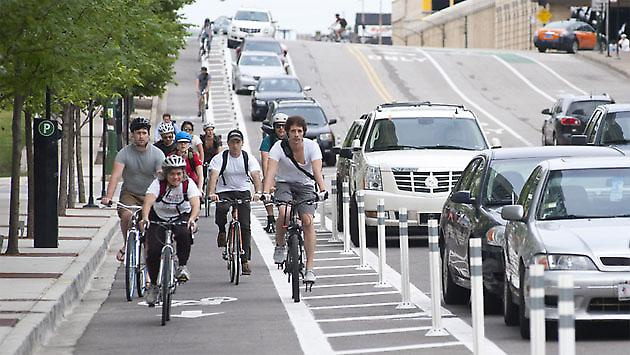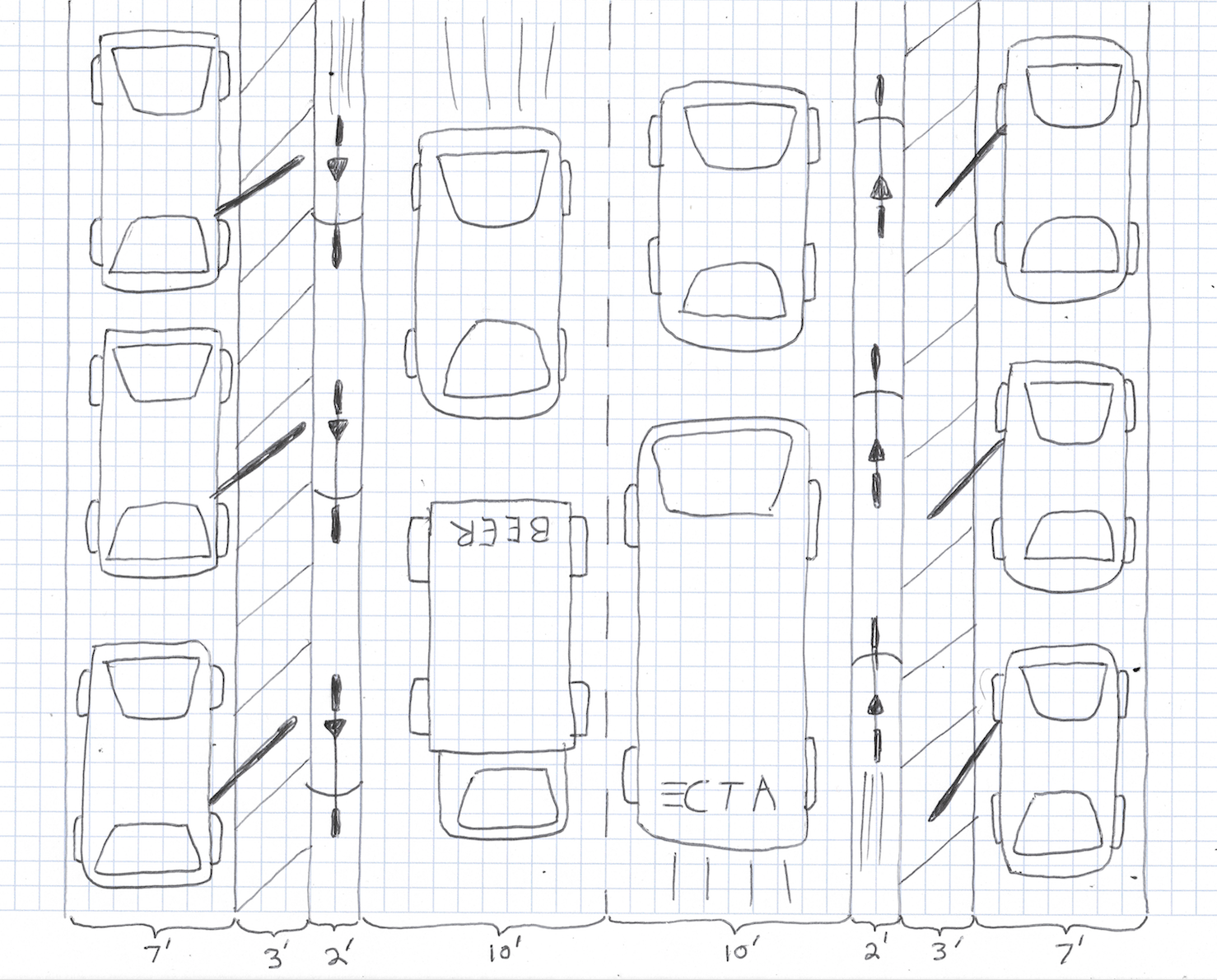Update 9/10/18: After feedback from readers (see comments below) and some one-the-road research with a tape measure, I realized that my proposal for anti-dooring bike lanes on a 44-foot-wide road wouldn't work because riding in a bike lane with your wheels within one foot of the travel lane isn't particularly safe or pleasant. Apologies for the oversight. I've taken another stab at the problem using a 46-foot road width instead.
For the past quarter-century, I've ridden a bike just about every day in Chicago, sharing the road with motorized traffic and cycling past long lines of parked cars. But -- knock on wood -- it's been decades since I've crashed after striking a car door that a careless motorist suddenly popped open in my path.
A major reason for my good fortune is that long ago I got into the habit of riding with the center of my bike about four feet away from parked cars. It's now an automatic tendency and I don't even think about it any more. But when the occasional car occupant thoughtlessly opens their door without looking behind them for bikes, I'm usually out of harm's way, or at least have enough time to safely steer clear.
Three recent cases in which cyclists were critically injured or killed in the Chicago area after striking open car doors got me thinking about ways to prevent these tragedies. In 2013 Chicago began requiring cabbies to install dooring awareness stickers in their windows reminding passengers to "LOOK" before exiting. And last month legislators in Springfield passed House Bill 5143, which adds the Dutch Reach anti-dooring strategy to Illinois’ Rules of the Road manual.
Well-designed protected bike lanes are an effective way to virtually eliminate dooring crashes. In Chicago, the lanes are typically installed curbside with the parking lane to the left, and the parking and bike lanes separated by a wide striped buffer with flexible posts, and/or concrete curbs.

With this layout, cyclists can't be struck by doors opened on the driver side, and they're far enough away from the passenger side that it's unlikely they would make contact with an open door. And even if they did have to swerve out of the way, they'd be heading towards the curb, rather than into moving traffic.
However, protected bike lanes are relatively expensive compared to non-protected lanes, and they require a significant amount of road width. They can also be politically challenging to install because they usually involve eliminating a few parking spaces near intersections so that turning drivers and cyclists can see each other, and they sometimes require converting mixed-traffic lanes, taking space away from drivers.
On streets where protected bike lanes aren't an option it's common for the city of Chicago to install buffered bike lanes, which have a foot or two of dead space striped to the left of the bike lane (to help keep cyclists away from moving cars) and/or to the right (to help keep them out of the way of car doors.) The relatively narrow buffer on the right is somewhat helpful for preventing doorings, but this layout still sends the message that it's OK for cyclists to ride within two feet of parked cars, which isn't safe.

Moreover, the city still installs non-buffered bike lanes on some streets that are deemed too narrow to install protected or buffered lanes without removing a car parking lane, which is often politically impossible. The narrowest street width with parking that the Chicago Department of Transportation will install bike lanes on is 44 feet, with seven-foot parking lanes, five-foot bike lanes, and ten-foot travel lanes. Non-buffered lanes are often disparaged as "door-zone lanes" by cyclists who feel they encourage cyclists to ride in harm's way.
So here's a strategy for preventing doorings that's cheaper than protected lanes, takes little or no effort from a political standpoint, and will work on streets as narrow as 44 feet with parking. It could be used at all locations where non-buffered bike lanes currently exist, or where they could be installed in the future, and it would also be the best approach for wider buffered lanes.
The bike lane should be striped so its entire width has cross-hatchings (see the drawing at the top of this post), except for the last two feet on the left, closest to the center of the road. That area would be remain clear, indicating that that's where you're supposed to ride, out of the way of opening car doors.
What do you think of this idea, and have you seen it implemented in other cities? (I haven't.) Let us know in the comments section.





